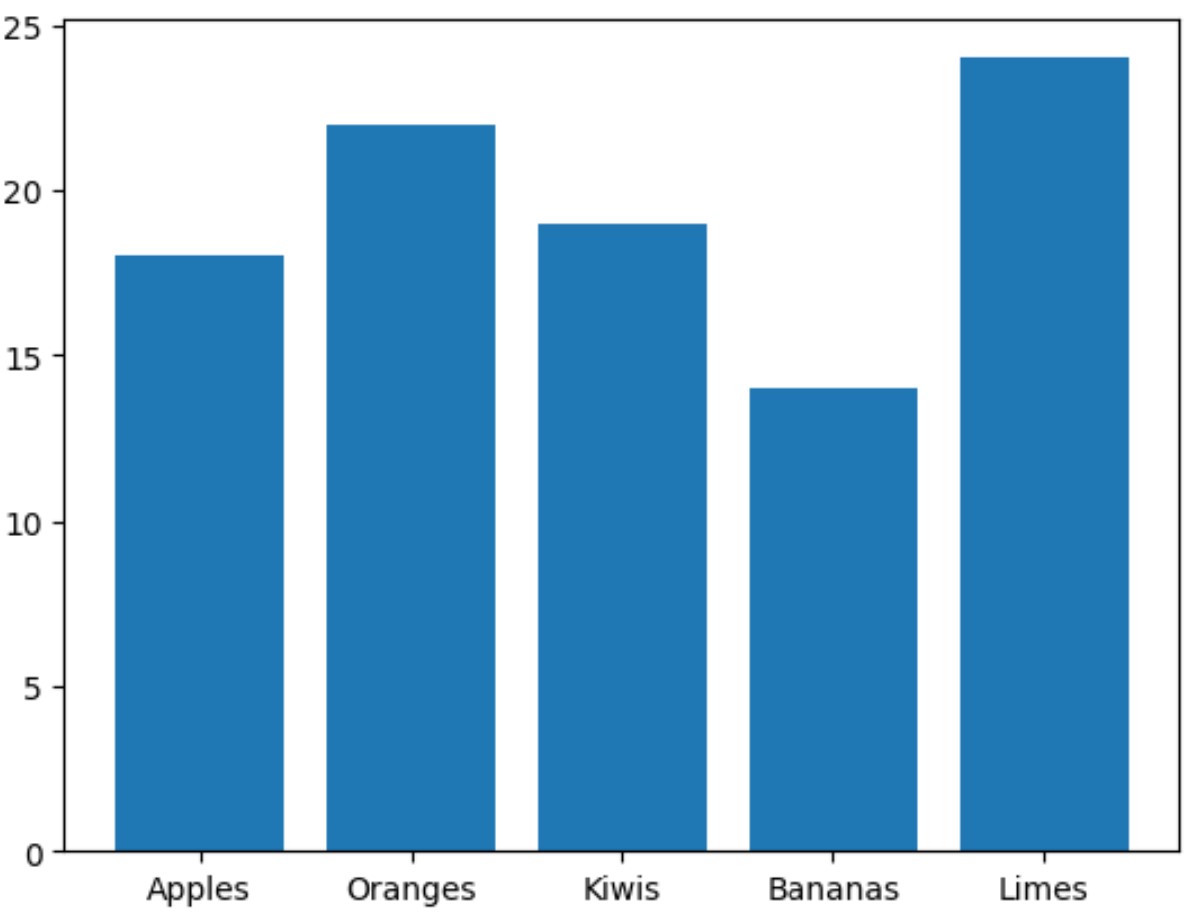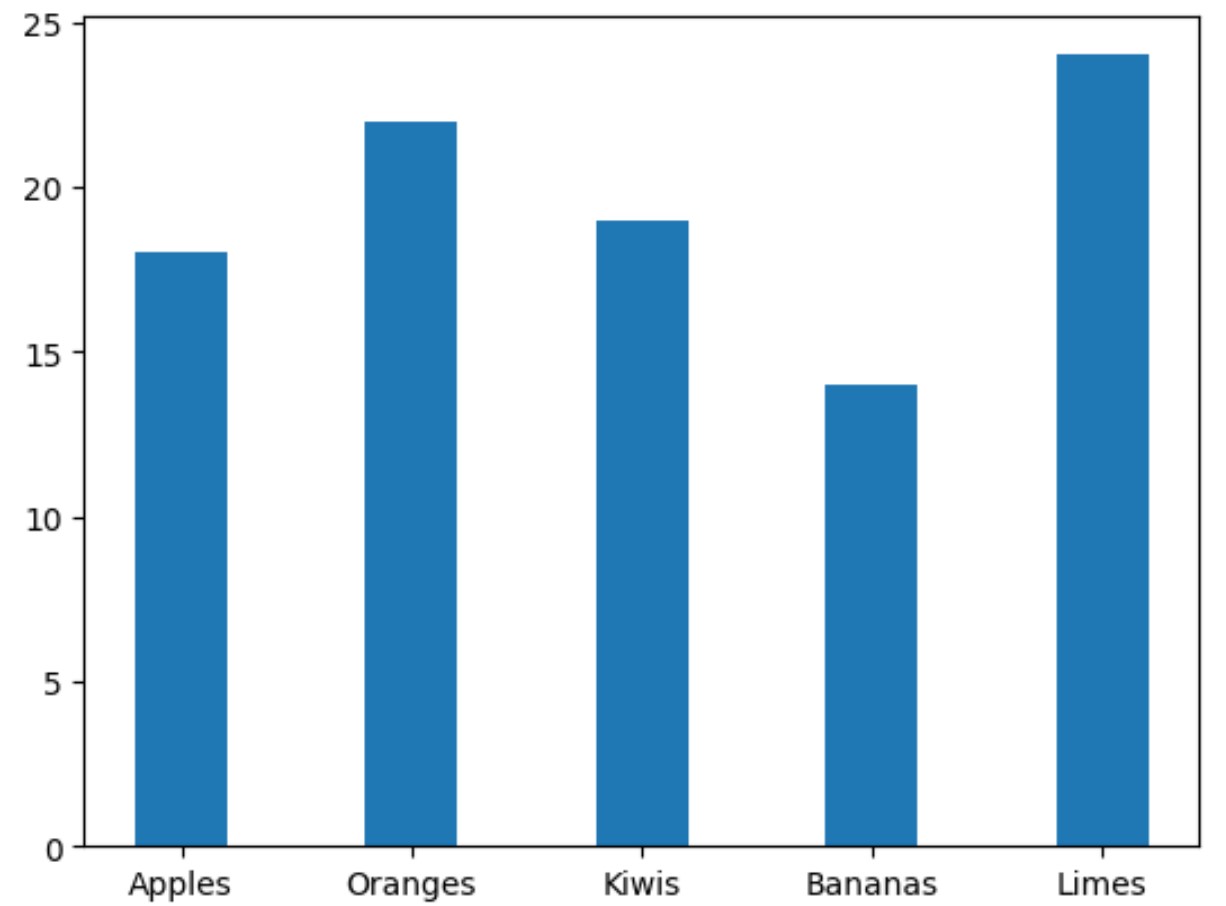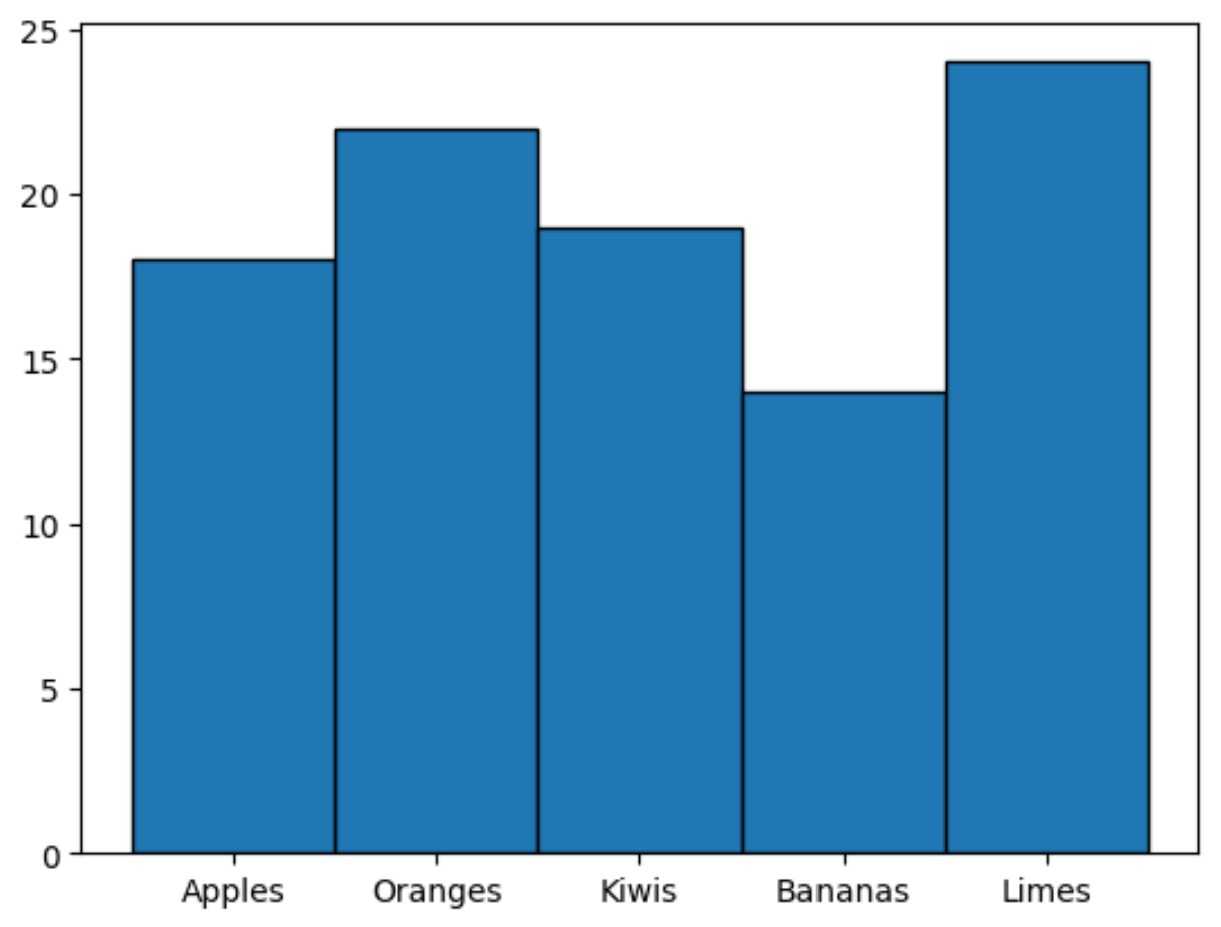วิธีปรับความกว้างของแถบใน matplotlib
คุณสามารถใช้อาร์กิวเมนต์ width เพื่อปรับความกว้างของแท่งในแผนภูมิแท่งที่สร้างโดย Matplotlib:
import matplotlib. pyplot as plt
plt. bar (x= df.category , height= df.amount , width= 0.8 )
ค่าเริ่มต้นสำหรับ ความกว้าง คือ 0.8 แต่คุณสามารถเพิ่มค่านี้เพื่อทำให้แถบกว้างขึ้น หรือลดค่านี้เพื่อทำให้แถบแคบลง
ตัวอย่างต่อไปนี้แสดงวิธีใช้ไวยากรณ์นี้ในทางปฏิบัติ
ตัวอย่าง: ปรับความกว้างของแถบใน Matplotlib
สมมติว่าเรามี DataFrame แพนด้าต่อไปนี้ซึ่งมีข้อมูลเกี่ยวกับยอดขายรวมของผลิตภัณฑ์ต่างๆ ที่ร้านขายของชำ:
import pandas as pd
#createDataFrame
df = pd. DataFrame ({' item ': ['Apples', 'Oranges', 'Kiwis', 'Bananas', 'Limes'],
' sales ': [18, 22, 19, 14, 24]})
#view DataFrame
print (df)
item sales
0 Apples 18
1 Oranges 22
2 Kiwis 19
3 Bananas 14
4 Files 24
เราสามารถใช้โค้ดต่อไปนี้เพื่อสร้างแผนภูมิแท่งเพื่อแสดงภาพจำนวนยอดขายสำหรับแต่ละรายการ:
import matplotlib. pyplot as plt
#create bar chart
plt. bar (x=df. item , height=df. sales )

ตามค่าเริ่มต้น Matplotlib จะใช้ความกว้าง 0.8
อย่างไรก็ตาม เราสามารถใช้อาร์กิวเมนต์ width เพื่อระบุค่าอื่นได้:
import matplotlib. pyplot as plt
#create bar chart with narrow bars
plt. bar (x=df. item , height=df. sales , width= 0.4 )

โปรดทราบว่าแถบจะแคบกว่ามาก
โปรดทราบว่าหากคุณใช้ค่าความกว้างเป็น 1 แถบจะแตะ:
import matplotlib. pyplot as plt
#create bar chart with width of 1
plt. bar (x=df. item , height=df. sales , width= 1 , edgecolor=' black ')

คุณสามารถปรับค่าของอาร์กิวเมนต์ ความกว้าง เพื่อทำให้แถบการลงจุดกว้างหรือแคบได้ตามที่คุณต้องการ
แหล่งข้อมูลเพิ่มเติม
บทช่วยสอนต่อไปนี้จะอธิบายวิธีดำเนินการงานทั่วไปอื่นๆ ใน Matplotlib:
วิธีสร้างแผนภูมิแท่งแบบเรียงซ้อนใน Matplotlib
วิธีสร้างฮิสโตแกรมความถี่สัมพัทธ์ใน Matplotlib
วิธีสร้าง barplot แนวนอนใน Seaborn